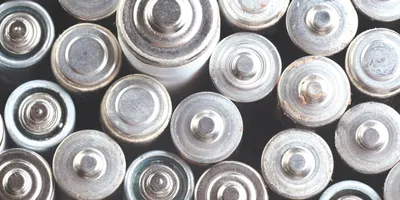Battery labs increasingly test recycled powders without knowing it. Global recycling capacity could exceed 1,500 GWh by 2030 as scrap and end-of-life cells re-enter the supply chain1. These reclaimed inputs now appear in cathode blends and graphite streams once assumed clean. They often burn unpredictably, and sulfur is one of the first results to slip.
Sulfur readings flag residual chemicals, cross-contamination, and potential thermal instability. When recovery falls outside expected limits, sign-offs are delayed until the root cause is identified. This article explains why recycled powders skew sulfur results and what labs watch for to stay accurate.
Why recycled powders hold more moisture

Recycled powders absorb water because their fractured structure exposes fresh surfaces and leaves porous binder residues. Black mass, the fine powder left after shredding batteries, mixes electrode fragments, binders, and salts that can trap or re-absorb moisture faster than virgin powders. Elevated moisture complicates testing and, in uncontrolled conditions, can increase the risk of thermal runaway or explosion during battery processing².
Why water masks sulfur
Moisture distorts sulfur readings in three key ways:
- Heat sink: Bound water lowers the local temperature, leaving sulfides only partly oxidized and cutting SO₂ yield.
- SO₂ dilution: Moisture can dissolve sulfur dioxide before it reaches the detector. EPA Method 6C recommends heated lines and traps to reduce this interference³.
- Matrix shielding: Wet binders coat particles and delay oxidation, further depressing recovery.
Spot moisture before combustion
Many labs use a thermogravimetric step (25 °C to 110 °C at ~8 °C/min with a short hold) to flag residual water and volatiles before combustion. This approach helps screen for moisture in black mass and coated powders, where binders and ash complicate drying⁴.
Dry fast, verify often
Labs often dry battery powders before analysis to reduce moisture variability, but drying time and conditions vary. The goal is to remove water without oxidizing carbon or altering sample mass. As-received black mass can retain high levels of moisture and ash, making consistent preparation critical for reliable sulfur recovery².
Track batches to flag sulfur drift
Sulfur drift often reflects moisture variation or sample inconsistency rather than instrument failure. If carbon or ash values shift alongside sulfur, the likely cause is a change in the incoming powder.
Treat sulfur recovery as a QA control point
Low sulfur recovery rarely means the furnace is broken. More often it signals moisture or incompletely burned materials. Screening for early mass loss, standardizing prep time, and watching batch trends give QA teams a clearer read on powder behavior and help avoid costly reruns.
References
1. Global EV Outlook 2024, International Energy Agency. https://www.iea.org/reports/global-ev-outlook-2024
2. Chen et al., Safety Concerns for the Management of End-of-Life Lithium-Ion Batteries, Global Challenges (2022). https://doi.org/10.1002/gch2.202200049
3. EPA Method 6C: Determination of Sulfur Dioxide Emissions Using Infrared Absorption. https://www.epa.gov/sites/default/files/2017-08/documents/method_6c.pdf
4. TGA801 Moisture and Ash in Graphite Powders, LECO Corporation, Application Note 203-821-676.











